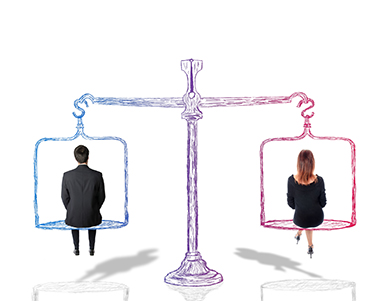Without entering inside the controversial world of Feminism and its fights, Gender Gap is a scientific and widely proved phenomenon deep rooted in all world societies. Following the Oxford Vocabulary definition, Gender Gap means “The discrepancy in opportunities, status, attitudes, etc., between men and women”. This definition includes the difference of behaviour and expectations toward women inside cultural and social environment, as well as its repercussion inside work and life conditions. Both this aspect has been taken in consideration by the European Union through its several actions against the Gap. But how much the European Union is affected by the Gender Gap? In which terms closing the Gap could benefit the Union? Which kind of provisions the EU has developed for contrast this phenomenon?

Here a general overview on the Gender Equality status inside the Union (June 2017). First of all, it is important to acknowledge the forerunner position of European society on this issue. According to the 2016 Global Gender Gap Report published by the World Economic Forum, Western Union is the only one expected to definitively close the Gender gap within one generation (47 years), meanwhile Easter Europe and central Asia macro-region will need 93 years, and, stunningly, North America is not even improving but is going backward instead. In those fifty years, however, Europe must continue to work hard. The official Gender Statistics by Eurostat and the 2017 “Report on Equality between women and men in the EU” by the European Commission show a sharp discrimination hitting women on education, employment and incomes.
Even if women had surpassed men in completing tertiary education program (10 percentage points of difference), there is still huge difference on the subject studied with male scientist outnumbering women. Moreover, even if more women have reached highest levels of education than man, the employment and payment gap is still wide. On 2016 the employment rate for men stood at 77,4% while the 65,5% of women was employed. This is the highest rate ever reached but we should not forget that the increasing is due in large part to the raise of women’s retirement age past years. While employment gap is at least narrowing, the difference between payment gap in the period 2010-2014 is only 0.01% (16.3% in 2010 and 16,4% in 2014) showing a really slow improving pattern toward the equality in payment, with 8 European countries doing worse than in precedence. Several are the reasons why women are paid less beside the still spread direct discrimination on work. Women are more likely to enter inside less paid job sectors (sectoral gender discrimination) as well as to be occupied in non- standard forms of employment like zero-hours contracts and part time jobs.
For having a general data about this issue is useful looking at the Gender Earning Gap rate that includes both employment and payment gap combined with the presence of women inside atypical works. The latest data available refers to 2014 when the media EU amount at 39.8% (in 2010 was 40.1%) with even the most equal countries registering a difference of 20% between women and men payments.
These data are showing an evident discrimination against women that is clear on work but of course had its causes and reasons inside the social and cultural environment of European States. European Union has usually had a strong commitment toward gender discrimination. Already inside the Treaty of Rome was included the provision for assuring equal pay, while with the Treaty of Amsterdam equal opportunities between women and men started to be a fundamental aim of the Union.
However, the importance of the fight against gender discrimination is not only a moral and ethical priority but it has also some meaningful repercussion on European economy. Researches made by the European Institute of gender Equality demonstrate that improving Gender Equality will boost 2050 European GDP between 6.1% and 9.1% which amounts from €1.95 to €3.15 trillion. Closing the Gender Gap means the reduction of poverty among the Union, as women are more at risk of low or absent income, as well as the increase of (women) participation inside the high value-added STEM sector. Eliminating the Gender Activity Gap would raise the number of employee and create from 3.5 and 6 million of jobs in 2050 as the result of the entering of women inside the Labour Force. Finally, assuring less discrimination and granting more equally shared non-paid work burden between male and female will improve European fertility rate, which will positively affect issues like retirement and generational turnover on work.
Therefore, closing the Gap is not relevant only for social justice and equal enjoying of human rights but it contributes also to the development of a “smarter” economy capable to deploy the potential of the whole European population. By recognizing so the European Union had renewed its commitment throughout the EU Gender Action Plan 2016-2020. The Plan is based on three main goals: ensuring girl’s and women’s physical and psychological integrity, promoting social and economic rights and empowering girls and women to raise their participation inside society. These actions will not involve just European Union but they will be taken in consideration also inside the European External Action Service thus, during bilateral and regional programming with foreign States.
As the EU Commissioner for Justice, Consumers and Gender Equality Vĕra Jourová has stated, European Union has still “a mountain to climb” for granting gender equality all along Europe. Indeed, there is still a lot of work to do, mostly on the primary cultural level, first cause of gender divisions and main promoter of the obstacles that women had to face in affirming themselves inside work and social environment. However, the European Union seems to have undertaken the right path toward a true non-discriminatory society based on inclusiveness and social justice, where women could enjoy freely their European citizen rights.
Visits: 851

